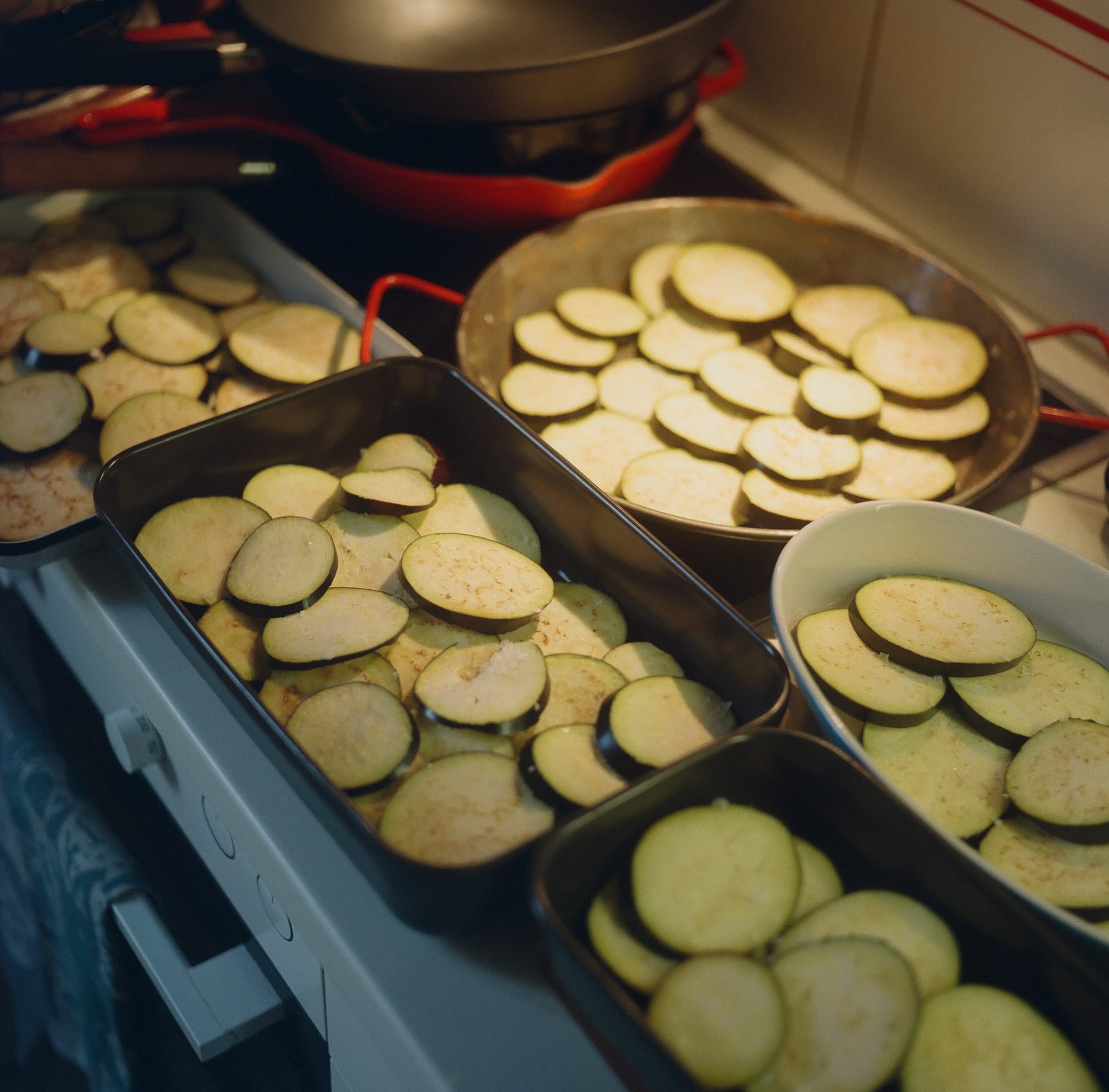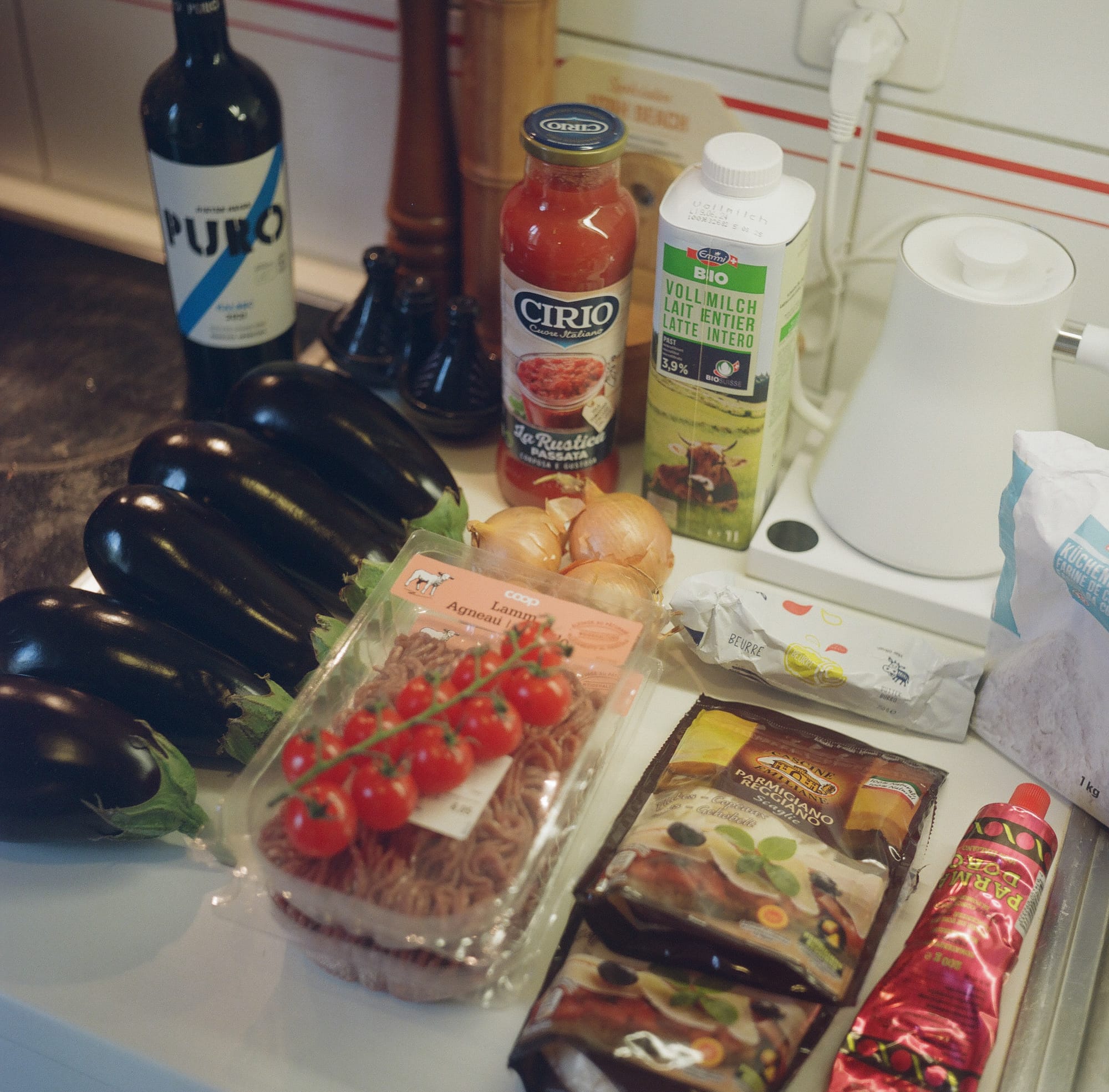What to eat GREECE 🇬🇷 Moussaka
Among Greeks, it is said that the finer details are what is most contested... The bechamel too is also open to debate.

Moussaka
Published October 4, 2024 · by Amanda Rivkin Häsler
Moussaka is a popular dish in many lands including Greece, Turkey, the Balkans, the Levantine coast and Egypt. While its name comes from the Arabic musaqqa’ah meaning soaked, as in the tomato sauce, the Greek variation has a very special touch, namely the bechamel sauce.
Contrary to the once held belief of the renowned Greek food writer Aglaia Kremezi, this rich hearty dish did not originate within the confines of Topkapi Palace in Istanbul with some French trained chef. In fact, the bechamel that distinguishes Greek moussaka from its Turkish and Arabic cousins only became associated with the dish and the Greek kitchen in the last century.
Nikolaus Tselementes who trained at the St. Moritz Hotel in New York and Sacher in Vienna added the touch only in the last century. He developed the dish in the 1920s after the Ottoman Empire was dismantled as a political effort to drive Greece back closer to Europe and restore the country’s cuisine to its native European heritage.
Born in 1878 on the island of Sifnos, Tselementes grew up in Athens. He began publishing a cookery magazine in 1910 and followed with a book of recipes and household advice. The prolific author of the hard-to-obtain volume known to Greeks as Odigos Mageirikis, his legendary masterwork, came to be translated into English as Greek Cookery. His training in French techniques and disdain for certain key Mediterranean ingredients are the reason we have the special Greek moussaka we have today.
But before Tselementes could come and add a topper, we have a medieval cookbook from the thirteenth century, A Baghdad Cookery Book (Kita al-Tabikh), that suggests moussaka originated in the Levant. However, while the dish and name existed, it was a far cry from the delicious Greek dish we think of as the country’s national cuisine. Instead, it was more of an eggplant stew with aubergine and onions, spiced meat and fat, soaked in a vinegar gravy.

Tselementes contribution was to adjust and add not just the bechamel but the layers of eggplant that makes moussaka lasagna-like, only with vegetable or vegetables in lieu of sheets of pasta. While his name became synonymous with Greek cooking due to his strong influence on home cooks and restaurant chefs among Athens’ emergent middle class, he had strong opinions about the nature and character of Greek cuisine when he arrived on the scene.
Tselementes found traditional Greek cooking to be “greasy, overspiced and unappealing,” according to Greek culinary writer Kremezi. He effectively transformed a cuisine he partially rejected, believing Greek food to be contaminated by the Ottoman occupation from the mid-fifteenth century until 1821. He did not like olive oil, garlic, herbs and lemon – all essential aspects and flavors of the Mediterranean diet. By contrast, he adored bechamel and “favored sweet and very mild foods,” as Kremezi told National Geographic in 2023.
The result of all this rich experimentation is a purist’s nightmare as there is ultimately no one way to make moussaka, with even the origin story adding a personalized spin. Among Greeks, it is said that the finer details are what is most contested. The meat used can be of many varieties, like lasagna, in that lamb, pork, veal and beef are all to be found in various recipes (though we opted for the more traditionalist lamb).

Fasting within the Orthodox Christian calendar means there are also recipes of vegetarian versions available for holidays such as Lent when animal bi-products are restricted from the diet. Chefs have also taken to playing with the meat component such as Konstantinos Troumouhis using lobster and the Australian George Calombaris trying it out with butter chicken, though neither of these dishes remains on the menu of their respective restaurants.
The bechamel too is also open to debate. Tselementes is obviously a man who likes a quality bechamel, but it can be replaced with yogurt, whipped feta or even enriched egg yolks. Our version is more of a return to classic Tselementes in that it eschews many of the ingredients he most objected to in favor of a softer palette.
The night we made moussaka with eggless bechamel, our Greek-Swiss friend Giannis came over and gave it strong marks. Later, Giannis texted, “Cookbooks in Greek are not called cookbooks, but Tselementes.”
Recipe
Ingredients:
Olive oil
5 eggplants
Maldon salt
4 small yellow onions
9-10 cherry tomatoes
600 grams ground lamb
2 tablespoons oregano
1 tablespoon sweet paprika
1 teaspoon pepper
1 teaspoon dried garlic
680 grams of tomato sauce
2 table spoons of tomato paste
250 grams of butter
4 tablespoons flour
2 cups milk
250 grams parmesan
Step 1: Slice eggplants into thin round slices and place on a lightly greased tray. Sprinkle with salt and let sit 30 minutes.
Step 2: Pre-heat oven to 225 degrees Centigrade.
Step 3: Dice four small yellow onions. Add to pan with olive oil and allow to caramelize on low heat.
Step 4: After 30 minutes, roast the eggplants in the oven until they turn slightly golden brown. Allow to cool. Take turns of roasting eggplants in the oven due to space and tray constraints if needed.
Step 5: Take 9-10 cherry tomatoes and place in a small tray, sprinkle with salt and olive oil. Place in oven with last round of eggplants. Pull out after 20-30 minutes, once tender.
Step 6: Once onions have caramelized, add ground lamb, oregano, sweet paprika and pepper. Combine until lamb is fine and then add tomato sauce and tomato paste. Add two tablespoons red wine and let simmer.
Step 7: After everything is cooled, layer your eggplant and lamb meat tomato sauce like lasagna. Add the oven-roasted cherry tomatoes in the final two layers. Place in oven for 10-15 minutes.
Step 8: Now for the bechamel! Melt 250 grams of butter over the stove. Add flour and slowly add two cups of milk. Once that is combined, add parmesan and stir. This is your bechamel sauce.
Step 9: After moussaka is in the oven for 20-25 minutes, remove, pour on bechamel and turn oven on high until the top layer of bechamel is crusty.
Tips, tricks and notes:
There is a variation in the Greek region of Macedonia (not to be confused with the independent country of North Macedonia) that I read about after first making this recipe that involves a similar process as the eggplants but with long slices of potatoes at the very bottom to help the dish maintain form. We tried it and yes, potatoes sliced thin and long as a base can keep moussaka together better and while undeniably true, the taste of pure aubergine was less heavy and far more satisfying, in our opinion.
Learn where to eat Greek food in Switzerland.
Follow our social media pages @swissglobaldining on Instagram, TikTok and YouTube